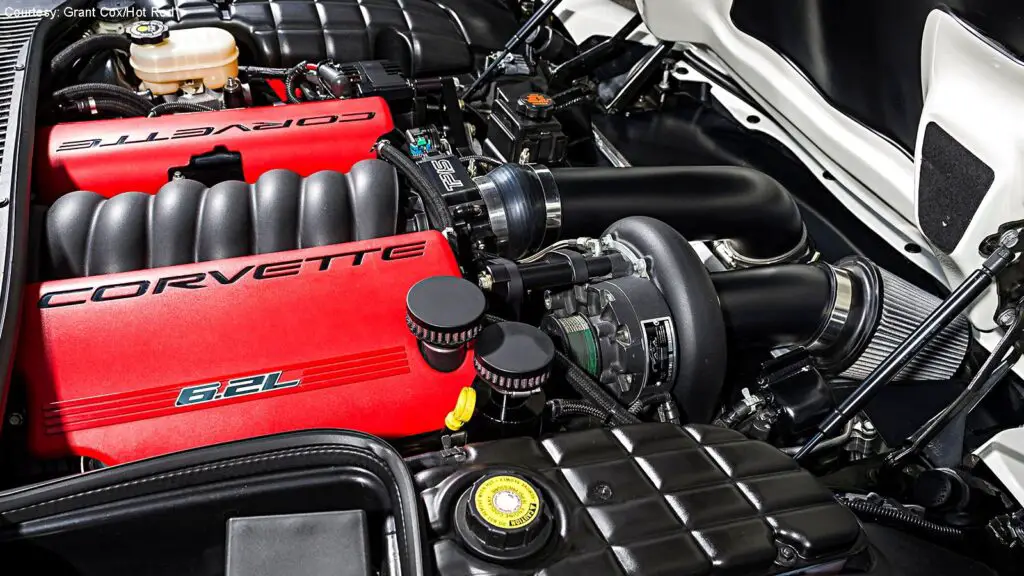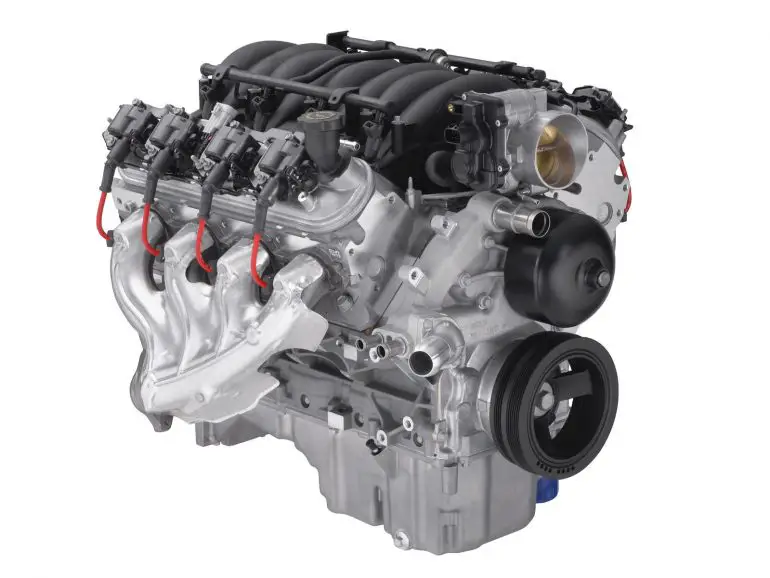LS 6.2 engine specs feature 430–436 hp, 420–428 lb-ft torque, and a 6.2L aluminum V8. It’s known for strong performance and reliability.
When it comes to high-performance small-block V8 engines, the LS 6.2-liter engine, particularly the LS3 variant, is one of General Motors’ most iconic powerplants. From powering the Chevrolet Corvette to being the heart of many custom builds and swaps, the LS 6.2L represents the sweet spot of power, reliability, and tuning flexibility.
However you’re a gearhead, a tuner, or simply curious, this guide breaks down everything you need to know about the LS 6.2 engine’s specs, performance, and common uses.

Contents
Engine Overview
The LS 6.2L engine is part of GM’s Generation IV small-block V8 family. Originally introduced in 2008 with the LS3 version, it was developed to deliver strong horsepower and torque numbers while offering weight reduction through extensive use of aluminum.
This engine architecture also served as a base for more powerful variants, such as the supercharged LS9 and LSA, as well as the LT1 and LT4 that followed in the Gen V family.
LS 6.2 Engine Specs
| Specification | Value |
|---|---|
| Engine Code | LS3 (also includes L92, L99, LSA, etc.) |
| Displacement | 6.2 Liters (376 cubic inches) |
| Block Material | Cast Aluminum |
| Head Material | Aluminum |
| Bore x Stroke | 4.065″ x 3.622″ |
| Compression Ratio | 10.7:1 |
| Valvetrain | OHV, 2 valves per cylinder |
| Fuel Delivery | Sequential Fuel Injection (SFI) |
| Horsepower | 426–436 hp @ 5,900 rpm |
| Torque | 420–428 lb-ft @ 4,600 rpm |
| Redline | 6,600 rpm |
| Firing Order | 1-8-7-2-6-5-4-3 |
🔩 Note: Output varies slightly depending on the application — Corvette LS3s make up to 436 hp, while crate versions typically ship with 430 hp.
Common Applications of ls 6.2 Engine Specs
The LS 6.2 engine (commonly the LS3) is widely used across various performance and utility applications due to its high horsepower, torque, and reliability. Here are the most common applications:
OEM (Factory Vehicles)
- Chevrolet Corvette C6 (2008–2013)
- Chevrolet Camaro SS (2010–2015)
- Chevrolet SS Sedan (2014–2017)
- Holden Commodore HSV variants (in Australia)
- Chevrolet Silverado & GMC Sierra (L92 variant)
Crate Engine & Swaps
The LS3 became a favorite in the aftermarket world for engine swaps in:
- Classic muscle cars (Chevelles, Camaros, Novas)
- Restomods
- Kit cars (like Factory Five Racing builds)
- Off-road and custom 4×4 builds
Its compact size, aluminum construction, and support for both manual and automatic transmissions make it incredibly versatile.
Performance Characteristics of ls 6.2 Engine Specs
Here are the key performance characteristics of the LS 6.2 engine (LS3):
- Rev Range: Thanks to its lighter valvetrain and cam profile, the LS3 loves to rev and has a smooth power curve.
- Tuning Potential: With just bolt-ons (headers, intake, tune), LS3s can reliably reach 480–500 hp.
- Forced Induction: Many builders add superchargers or turbo kits to push LS3s well over 600–700 hp on stock internals.
- Reliability: It’s known for handling high mileage with minimal issues. Even under track abuse, the LS3 holds its own if properly maintained.
LS3 vs. Other 6.2L Engines
LS3 vs. Other 6.2L Engines comparison table –
| Engine | Application | Power Output | Notes |
|---|---|---|---|
| LS3 | Corvette, Camaro SS | 430–436 hp | Naturally aspirated |
| LSA | CTS-V, Camaro ZL1 | 556 hp | Supercharged |
| LS9 | Corvette ZR1 | 638 hp | Forged internals, supercharged |
| LT1 | Corvette C7, Camaro SS (Gen V) | 455 hp | Direct injection |
| LT4 | Corvette Z06, Camaro ZL1 | 650 hp | Supercharged |
Maintenance & Upgrades of ls 6.2 Engine Specs
Here’s a breakdown of the maintenance and upgrade potential for the LS 6.2 engine (LS3):
Maintenance Notes:
- Use high-quality synthetic oil (typically 5W-30)
- Check lifters/tappets if engine gets noisy
- Replace spark plugs and wires every 50k miles
Popular Upgrades:
- Performance camshaft kits
- Long tube headers and high-flow cats
- Cold air intakes and ported throttle bodies
- Superchargers or turbo kits
Crate Engine Info
The LS3 is available as a crate engine from GM Performance Parts. It includes:
- Assembled long block
- Oil pan
- Intake manifold
- Fuel injectors and rails
- Coil packs
Typical crate engine output: 430 hp and 425 lb-ft
GM also offers Connect & Cruise packages that pair the LS3 with a 4L65E, 6L80, or T56 transmission.

Frequently Asked Questions
Here are some FAQs about LS 6.2 engine –
1. What’s the difference between LS3 and L99?
The L99 is similar to the LS3 but includes Active Fuel Management (AFM) and variable valve timing (VVT). It was used in automatic Camaros and is slightly less powerful.
2. Can I daily drive an LS3 swapped car?
Absolutely. The LS3 has great street manners and reliability, making it perfect for both track days and daily driving.
3. Is the LS3 a direct-injection engine?
No. The LS3 uses port fuel injection. Direct injection began with the Gen V LT1.
4. How much does an LS3 crate engine cost?
As of 2025, pricing ranges between $7,500 and $9,000, depending on accessories and packages.
5. Can the LS3 handle forced induction?
Yes, with proper tuning and fuel delivery, the LS3 can handle 6–10 psi of boost on stock internals. Beyond that, forged components are recommended.
Conclusion
The LS 6.2 engine, particularly the LS3, stands as a benchmark in performance, reliability, and versatility. Whether you’re building a track monster, a street cruiser, or a weekend toy, this engine delivers impressive horsepower, a strong aftermarket, and proven durability.
Its balance of power and refinement makes it a go-to choice for enthusiasts and professionals alike. If you’re considering an engine swap or a high-performance upgrade, the LS 6.2 is hard to beat.